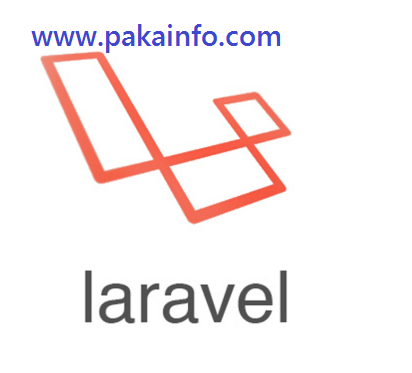Today, We want to share with you Laravel 5.7 REST API Tutorial Example.In this post we will show you Creating APIs in Laravel 5.7 using API resources, hear for Create restful APIs using Laravel 5.7 with resourceful routes example we will give you demo and example for implement.In this post, we will learn about Create REST API in Laravel 5.7 with authentication using Passport with an example.
Laravel 5.7 REST API Tutorial Example
There are the Following The simple About Laravel 5.7 REST API Tutorial Example Full Information With Example and source code.
As I will cover this Post with live Working example to develop PHP Laravel 5.7 – Rest API with Passport Tutorial, so the Laravel 5.7 – Create REST API with authentication using Passport Tutorial is following below.
There is All the API Routes URL using Laravel 5.7
- Student Login: API:GET, URL:http://student-management/oauth/token
- Student Signup: API:GET, URL:http://student-management/api/signup
- Student List: API:GET, URL:http://student-management/api/students
- Student Create: API:POST, URL:http://student-management/api/students
- Student Show: API:GET, URL:http://student-management/api/students/{id}
- Student Update: API:PUT, URL:http://student-management/api/students/{id}
- Student Delete: API:DELETE, URL:http://student-management/api/students/{id}
Step 1: Install Laravel 5.7 Project
Step by step from Full Example scratch in fresh Laravel 5.7 application
composer create-project --prefer-dist laravel/laravel atmiya25
Step 2: Setup Passport
// Setup passport via the Composer composer require laravel/passport //default migration php artisan migrate //Setup passport using command in Laravel 5.7 php artisan passport:install
Step 3: Laravel 5.7 Passport Settings
app/Member.php
app/Providers/AuthServiceProvider.php
'App\Policies\ModelPolicy', ]; public function boot() { $this->signupPolicies(); Passport::routes(); } }config/auth.php
[ 'web' => [ 'driver' => 'session', 'provider' => 'members', ], 'api' => [ 'driver' => 'passport', 'provider' => 'members', ], ], ..... ............... ]Step 4: Laravel 5.7 Add Student Table and Model
php artisan make:migration create_students_tabledatabase/migrations
increments('id'); $table->string('name'); $table->text('detail'); $table->timestamps(); }); } public function down() { Schema::dropIfExists('students'); } }create Laravel 5.7 migration
php artisan migrateapp/Student.php
Step 5: Laravel 5.7 API Routes
routes/api.php
group( function () { Route::resource('students', 'API\StudentController'); });Step 6: Make a Laravel 5.7 Controller Files
app/Http/Controllers/API/CustomController.php
true, 'data' => $result, 'message' => $message, ]; return response()->json($response, 200); } public function apiResponseError($error, $msgError = [], $code = 404) { $response = [ 'success' => false, 'message' => $error, ]; if(!empty($msgError)){ $response['data'] = $msgError; } return response()->json($response, $code); } }app/Http/Controllers/API/StudentController.php
apiResponseSuccess($students->toArray(), 'Students retrieved successfully.'); } public function store(Request $request) { $input = $request->all(); $validator = Validator::make($input, [ 'name' => 'required', 'detail' => 'required' ]); if($validator->fails()){ return $this->apiResponseError('Validation Error.', $validator->errors()); } $student = Student::create($input); return $this->apiResponseSuccess($student->toArray(), 'Student created successfully.'); } public function show($id) { $student = Student::find($id); if (is_null($student)) { return $this->apiResponseError('Student not found.'); } return $this->apiResponseSuccess($student->toArray(), 'Student retrieved successfully.'); } public function update(Request $request, Student $student) { $input = $request->all(); $validator = Validator::make($input, [ 'name' => 'required', 'detail' => 'required' ]); if($validator->fails()){ return $this->apiResponseError('Validation Error.', $validator->errors()); } $student->name = $input['name']; $student->detail = $input['detail']; $student->save(); return $this->apiResponseSuccess($student->toArray(), 'Student updated successfully.'); } public function destroy(Student $student) { $student->delete(); return $this->apiResponseSuccess($student->toArray(), 'Student deleted successfully.'); } }app/Http/Controllers/API/SignupController.php
all(), [ 'name' => 'required', 'email' => 'required|email', 'password' => 'required', 'c_password' => 'required|same:password', ]); if($validator->fails()){ return $this->apiResponseError('Validation Error.', $validator->errors()); } $input = $request->all(); $input['password'] = bcrypt($input['password']); $member = Member::create($input); $success['token'] = $member->createToken('MyApp')->accessToken; $success['name'] = $member->name; return $this->apiResponseSuccess($success, 'Member signup successfully.'); } }run Laravel 5.7 restful api Project
php artisan serveInclude Laravel 5.7 Must in Headers part
'headers' => [ 'Accept' => 'application/json', 'Authorization' => 'Bearer '.$accessToken, ]Angular 6 CRUD Operations Application Tutorials
Read :
Summary
You can also read about AngularJS, ASP.NET, VueJs, PHP.
I hope you get an idea about Laravel 5.7 REST API Tutorial Example.
I would like to have feedback on my Pakainfo.com blog.
Your valuable feedback, question, or comments about this article are always welcome.
If you enjoyed and liked this post, don’t forget to share.
